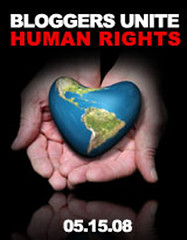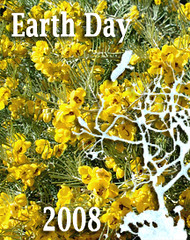For all the success of Earthday, there seems to be some cause for concern too . I’m not sure how to describe it. It’s like over commercialization and meaningless messages at the same time.
"Every company is out there touting 'we're green' -- it's the new requirement for being a good corporate citizen," Allen Adamson, managing director of WPP Group's branding consultancy Landor Associates, told The Wall Street Journal. "The noise level is so high now. The first few people into it had some benefit. Now it's a cost of entry.”
The Wall Street Journal article was something I thought about today while meeting with one of our clients — an engineering firm that retrofits boilers, making them more energy efficient and environmentally friendly. Enough so that one retrofit is equivalent to planting 700,000 trees. It’s important because of what they do, but it’s not their only message. Their work also achieves payback in less than one year.
And then I thought of some other messages I had seen today: Subaru of America is donating 160 cherry trees across the country; Nokia launched a program to make recycling mobile phones easier. SmarterTravel highlighted “green” travel designations on their Web site.
While there is nothing really wrong with any of it, it does makes me wonder.
Do these more frivolous pursuits for media attention do any good? Or do they merely distract from people and companies who do things daily? Does seeing a commercial with two Anheuser-Busch employees talking about the environment make you want to buy the beer? Was Wal-Mart really smart to declare April "Earth Month?" Should we all send Earthday cards around the planet from now on?
I don’t know. Maybe that’s the difference between participation and engagement. You can celebrate Earthday today and/or you can do something about the environment daily.
We’re dropping some artificial turf in the backyard tomorrow, which makes sense when you live in a desert. (Water conservation is a big deal here.) I suppose I could have issued a news release and called it an Earthday solution.
But given we can only communicate so many messages about ourselves and hope to have any one of them be remembered, there wasn’t much point in pretending. Huh. Maybe we could call that message conservation.
Right on. Let's make Earthday daily, but not a marketing gimmick or public relations stunt. We have enough of those already.

"Every company is out there touting 'we're green' -- it's the new requirement for being a good corporate citizen," Allen Adamson, managing director of WPP Group's branding consultancy Landor Associates, told The Wall Street Journal. "The noise level is so high now. The first few people into it had some benefit. Now it's a cost of entry.”
The Wall Street Journal article was something I thought about today while meeting with one of our clients — an engineering firm that retrofits boilers, making them more energy efficient and environmentally friendly. Enough so that one retrofit is equivalent to planting 700,000 trees. It’s important because of what they do, but it’s not their only message. Their work also achieves payback in less than one year.
And then I thought of some other messages I had seen today: Subaru of America is donating 160 cherry trees across the country; Nokia launched a program to make recycling mobile phones easier. SmarterTravel highlighted “green” travel designations on their Web site.
While there is nothing really wrong with any of it, it does makes me wonder.
Do these more frivolous pursuits for media attention do any good? Or do they merely distract from people and companies who do things daily? Does seeing a commercial with two Anheuser-Busch employees talking about the environment make you want to buy the beer? Was Wal-Mart really smart to declare April "Earth Month?" Should we all send Earthday cards around the planet from now on?
I don’t know. Maybe that’s the difference between participation and engagement. You can celebrate Earthday today and/or you can do something about the environment daily.
We’re dropping some artificial turf in the backyard tomorrow, which makes sense when you live in a desert. (Water conservation is a big deal here.) I suppose I could have issued a news release and called it an Earthday solution.
But given we can only communicate so many messages about ourselves and hope to have any one of them be remembered, there wasn’t much point in pretending. Huh. Maybe we could call that message conservation.
Right on. Let's make Earthday daily, but not a marketing gimmick or public relations stunt. We have enough of those already.






















